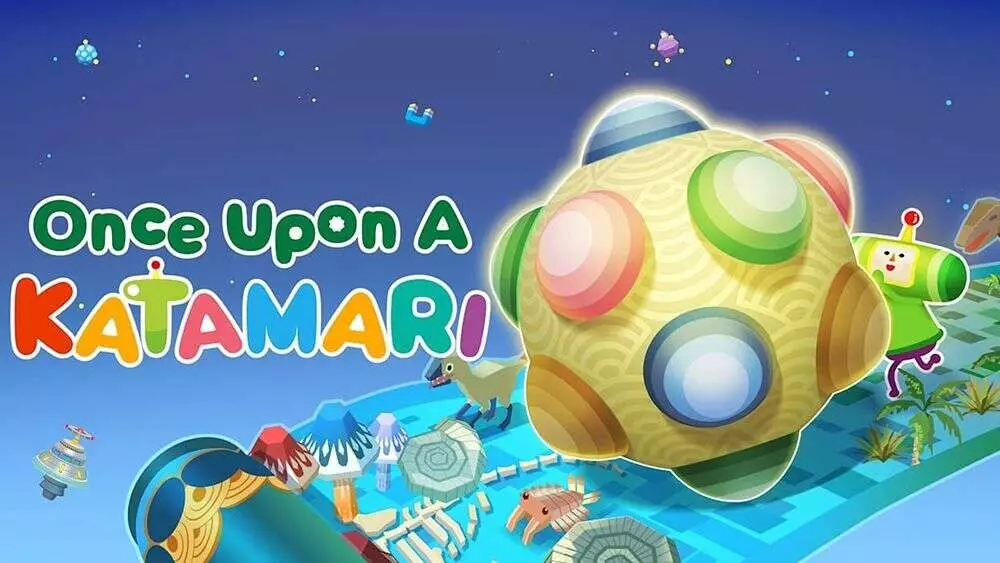After over a decade of dormancy, the beloved series Katamari Damacy is finally making a triumphant return, igniting enthusiasm among longtime fans and newcomers alike. The upcoming release, “Once Upon A Katamari,” marks not only a revival but an evolution of the franchise’s signature gameplay mechanics. Unlike many modern reboots that often chase after cutting-edge graphics at the expense of gameplay integrity, this new chapter preserves the whimsical charm the series has always been celebrated for, while introducing innovative features that could redefine its appeal in an increasingly competitive market. This is much more than a simple sequel; it’s a testament to the enduring legacy and creative ingenuity that the series embodies.
Groundbreaking Gameplay Reinvented with Competitive Play
What sets “Once Upon A Katamari” apart from its predecessors is its bold step into the realm of multiplayer competition—a first in the series. Previously, players enjoyed the straightforward, zen-like ball-rolling mechanics that created a unique rhythm and sense of satisfaction. Now, the addition of a competitive multiplayer mode challenges players to outperform each other in real-time, injecting a new layer of replayability and social engagement. This shift suggests a strategic move by the developers, aiming to modernize a niche genre without diluting its core experience. It underscores a recognition that collaboration, rivalry, and shared fun are integral to sustaining a game’s relevance in an era dominated by online multiplayer experiences.
Moreover, the array of new stages promises to keep players captivated with varied environments that challenge their creativity and strategy. The essence of the series—growing the titular katamari by collecting objects—remains intact, but the expanded stage selection enhances diversity and complexity. This is a conscious effort to keep the gameplay fresh, ensuring the game appeals not only through nostalgia but also through innovation.
Strategic Preorders and Editions to Cater to Enthusiasts
The game’s release strategy reveals an understanding of its core audience—dedicated fans and collectors who appreciate added value. Multiple preorder options for “Once Upon A Katamari” are available across platforms, with physical editions for the PlayStation 5 and Nintendo Switch, and digital options for Xbox and PC. The pricing tiers, notably the $40 standard edition and the $60 “King of All Sounds” edition, reflect a deliberate attempt to cater to different levels of investment and interest.
Preordering offers tangible benefits, such as early access to face customization parts, which add a personalized touch to gameplay. These bonuses incentivize early engagement and reward loyalty. More intriguingly, existing save data from previous entries—specifically “Katamari Reroll” and “We Love Katamari Reroll + Royal Reverie”—unlock the Young King as a playable character, weaving nostalgia into the new release and rewarding long-term fans.
The “King of All Sounds” edition further enhances value by including an extensive soundtrack and a wide array of costumes from previous titles. Such inclusions are not merely superficial; they exemplify the game’s acknowledgment of its musical and visual heritage, which have always played vital roles in defining its identity.
Leveraging the Series’ Timeless Appeal Amidst Competition
Despite the long hiatus, the franchise’s passionate cult following remains a vital component of its enduring success. The game’s distinctive art style—characterized by vibrant colors and quirky character designs—continues to resonate emotionally with players, reinforcing its identity as a whimsical yet meaningful experience. The series’ cultural footprint extends well beyond the games themselves, with adaptations into webcomics and publications that enrich the lore and deepen fan engagement.
The strategic release timing and the availability of remastered versions of earlier titles—offering both improved graphics and gameplay tweaks—capitalize on the franchise’s momentum. These remasters serve a dual purpose: attracting new players and providing nostalgic comfort to longtime fans eager to revisit the origins of the series with modern enhancements.
As the gaming landscape grows more competitive, the challenge for “Once Upon A Katamari” is not merely in retreading old glories but in demonstrating that a charmingly quirky concept can thrive through innovation and community engagement. By embracing multiplayer modes, offering diverse editions, and leveraging its rich legacy, the series is positioning itself as a resilient, lovable contender that refuses to fade quietly into the shadow of larger franchises. Instead, it stakes its claim firmly, promising a captivating, joyful experience that honors its past and boldly steps into the future.

